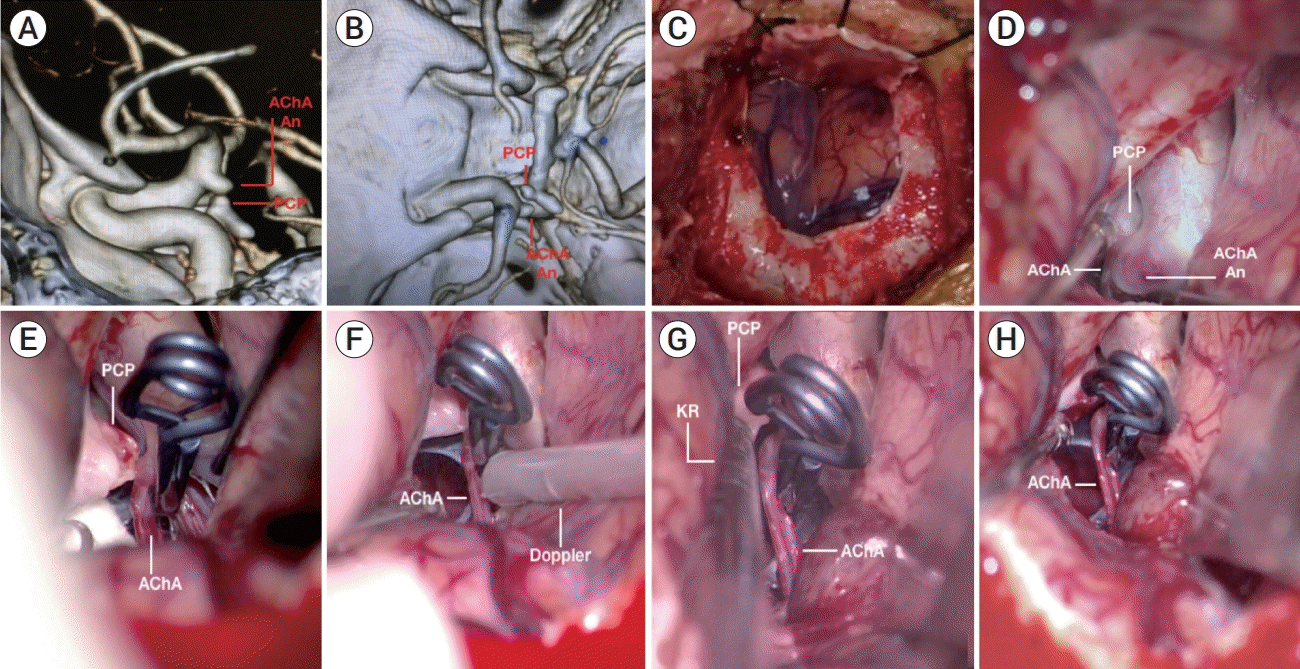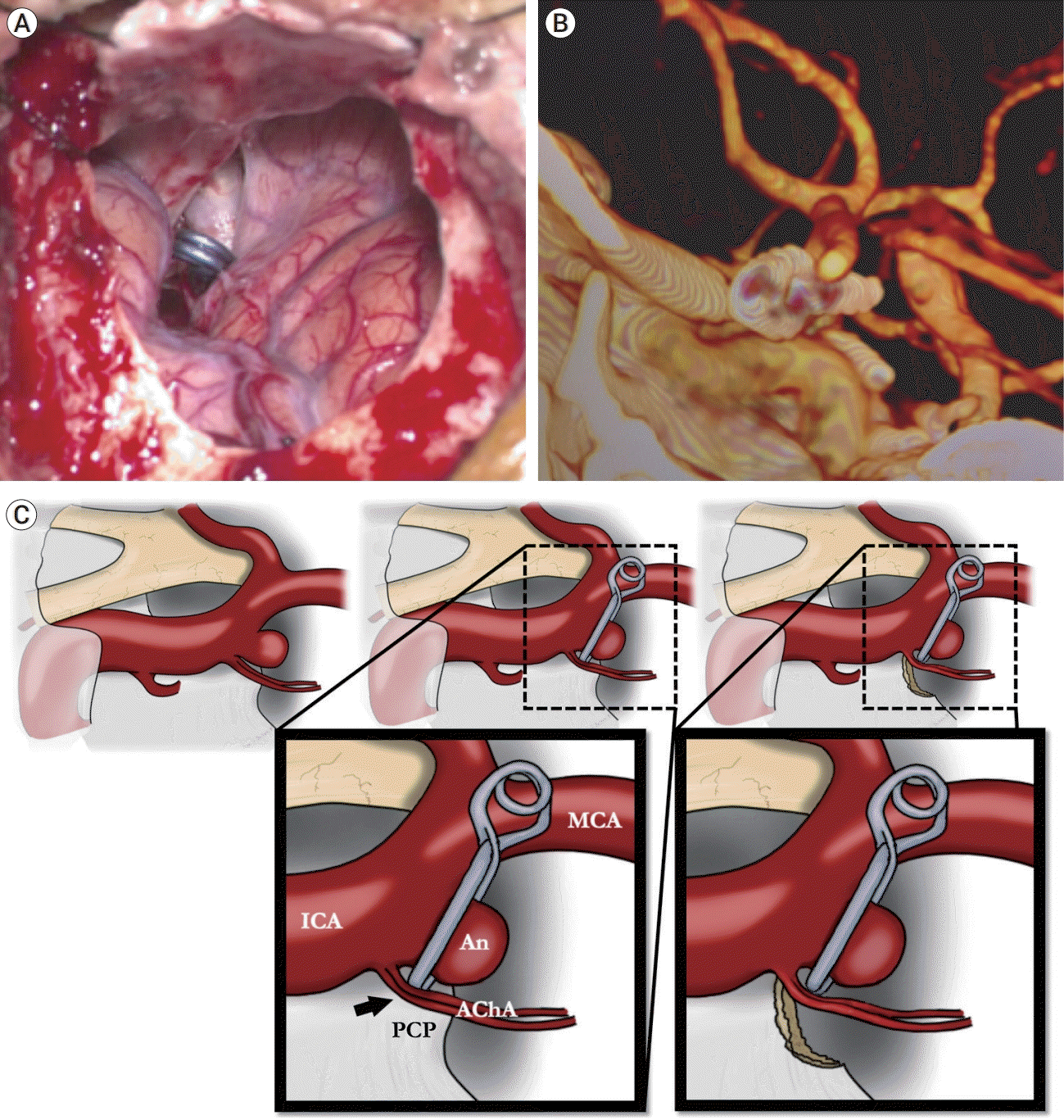INTRODUCTION
CASE PRESENTATION
 | Fig. 1.(A) CT angiography with bone reconstruction (lateral view): an aneurysm arising in the left AChA is observed. Inferiorly and medial to the aneurysm, the PCP with two bony prominences projecting superiorly and posteriorly. (B) Superior view of the same CT angiography. (C) Exposure of the sylvian fissure via a mini-pterional approach. (D) Surgical view under the operative microscope after the carotid cistern was dissected. The aneurysm sac was exposed and the origin of the AChA was identified. The PCP is medial to the aneurysm. (E) Intraoperative image of the clipped aneurysm, the compression of the AChA against the PCP is evidenced. (F) Use of Doppler probe on the AChA, which showed absence of flow. (G) Posterior clinoidectomy using Kerrison rongeur. (H) AChA liberated after the posterior clinoidectomy. CT, computed tomographic; AChA, anterior choroidal artery; PCP, posterior clinoid process; An, aneurysm; KR, kerrison rongeur. |
 | Fig. 2.(A) Macroscopic view of the surgical field after aneurysm clipping and posterior clinoidectomy. (B) Post-surgical CT angiography showing the clip and its projection in the space previously occupied by the superior projection of the PCP. (C) Artistic illustration of the concept detailed in the present report (the black arrow points at the site of vascular compression of the AChA against the PCP). CT, computed tomographic; PCP, posterior clinoid process; An, aneurysm; AChA, anterior choroidal artery; ICA, internal carotid arter; MCA, middle cerebral artery. |




 PDF
PDF Citation
Citation Print
Print



 XML Download
XML Download